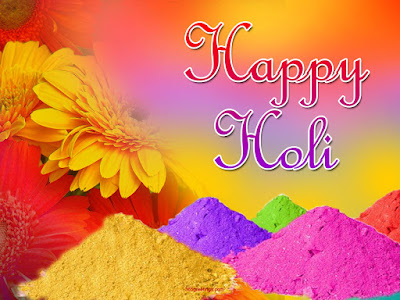Haridwar Maha Kumbh 2021
Even when the mercury dips down to a single digit, they continue to meditate and observe different rituals without being hindered in the least. These Naga Sadhus belong to different 'Akhadas', meaning camps. A number of Akhadas participate in the Haridwar Kumbh Mela, each having its own group of Naga Babas. Living life in the most unconventional way, the Naga Sadhus follow their own style and enjoy it too without caring about the world at all. During the Kumbh Mela in Haridwar, the Naga Babas can be seen performing different types of Yogasanas. To watch them busy meditating, travellers need to remain close to the Ganga ghats in Haridwar. You will be surprised to know that these Naga Sadhus can thrive merely on herbs. Interacting with the Naga Babas is seen as a rare opportunity to know things that are so out of the world yet belong to us. These sadhus make a pilgrimage to the Kumbh Mela to perform various types of Yogic asanas, Sashtang Dandthvad being the most prominent one. The purpose of this Yogic asana is to let the whole body prostrate. You will be deemed fortunate if you catch sight of these Naga Sadhus in some other Yogic postures like hanging from the branch of a tree.
The Naga Babas are also seen wearing numerous Rudraksha beads, believed to possess positive healing powers according to Hindu mythology. These are in actuality the beads of the Rudraksha tree. Not just a few, but you can witness Naga Sadhus wearing thousands of Rudraksha beads. They believe that wearing 11,000 Rudraksha beads will help them attain the form of Lord Shankara.
While you visit the Akhada (or camp) of Naga Babas, you will see them indulge in smoking 'chillum', a pot of clay to hold bhang, the narcotic marijuana. The consumption of bhang is also considered to be a part of the rituals performed by the Naga Babas. The sadhus hold the view that doing so will lead them to nirvana, meaning the final emancipation of the soul. Pilgrims also flock to the Akhadas of Naga Babas in large numbers. The upcoming Kumbh Mela in Haridwar will be organized in the year 2010. So, the next time you plan a tour to the Kumbh Festival, do try to find an opportunity to get to one of the Akhadas and interact with the Naga Babas. But, keep your cameras poised!
Shri Taponidhi Niranjani Akhada Panchayati
Shri Panchayati Anand Akhada
Shri Panchadashnam Juna Akhada
Shri Panch Aahvan Akhada
Shri Agni Akhada
Shri Panchayat Akhada Mahanirvani
Shri Panch Atal Akhada Bairagi Akhadas Shri Nirvani Akhada
Shri Digambar Akhada
Shri Nimrohi Akhada Nirmal Akhadas Shri Panchayati Udasin Akhada
Shri Udasin Panchayati Naya Akhada
Shri Nirmal Panchayati Akhada
About Akahadas
As per the Vedic Concept of life, the usual life span of a person was divided into four distinct periods or ashrams, brahmacharya or study period, grihastha or normal life period, vanaprastha, or withdrawal period and sannyasa. As this system fell into disuse and the concept of Mathas gained prominence and became an important centre to propagate ethical behaviour and to protect the Vedic concept of life. the sanyasis of various Mathas were divided into various categories governing the various aspects of Vedic life Akhara means literally a place for verbal debate or a place for practice for the protection of Sanatana Dharma.
Akhara is divided into 8 Davas (दावा) (divisions) and 52 Madhis (मढ़ी) (centres). Each Marhi is governed by a Mahant. The top administrative body of the Akhara is Shree Panch (the body of five), representing Brahma, Vishnu, Shiva, Shakti and Ganesha. It is elected on every Kumbh Mela and the body holds its post for 4 years. Traditionally during the Kumbh Mela, the Naga Sadhus, and the 'Akharas', take the principal place in initiating the bathing rituals, before the general population steps in.
Overview
Akharas are divided into different types according to the concept of God they worship. Shaiva Akharas for followers of Lord Shiva, Vaishnava or Vairagi Akhara for followers of Lord Vishnu and Kalpwasis for followers of Lord Brahma.
Its history date back to the 8th century AD when Adi Shankaracharya established seven Akharas namely Mahanirvani, Niranjani, Juna, Atal, Avahan, Agni and Anand Akhara. Today there are 3 major Akharas (Mahanirvani, Niranjani, Juna) and 3 minor Akharas (Atal affiliated with Mahanirvani, Anand affiliated with Niranjani, Avahan affiliated with Juna). Furthermore, there is one small Brahmachari Akhara named Agni, affiliated with Juna.
The naga Akhada Movement Akharas were established by Shree Adi Shankaracharya who divided Sannyasa into two categories:
Astradharis (weapon holders)
Shastradharis (scripture holders)
This movement was founded in the 8th century by Adi Shankaracharya when he established a group of fighters initiated followers whose task was to protect pilgrims and sadhus from robbers & other enemies, later called the Nagas Astradharis (weapon holders)
The first group is known as Naga Sannyasis; their initiation ceremony takes place only during Kumbh Mela. Only those who were initiated during Kumbh Mela in Prayag are eligible to be Shree Mahants. The initiation ceremony for nagas is different from those for the second group (Paramahansas and Dandies). The biggest Akhara - regarding the number of Sadhus in it - is Juna, then Niranjani and then Mahanirvani. The first person in the Akhara is the Acharya Mahamandaleshwar, followed by other Mahamandaleshwaras, Mandaleshwaras and Shree Mahants.






